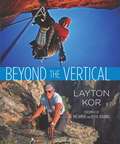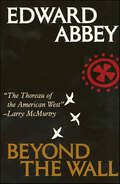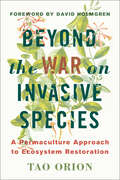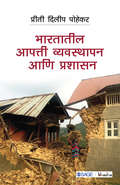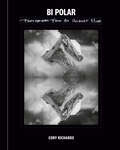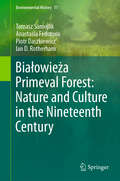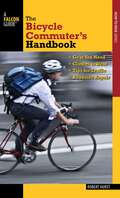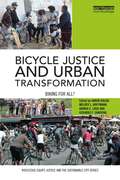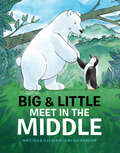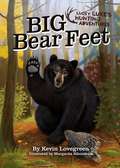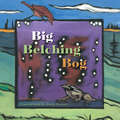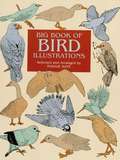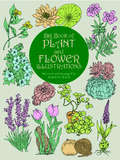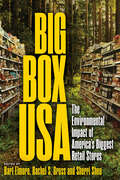- Table View
- List View
Beyond the Sea: A Novel
by Paul LynchA novel from the 2023 Booker Prize winning author of Prophet Song"Beyond the Sea is frightening but beautiful." --M John Harrison, The GuardianThe haunting story of two men stranded at sea pushing against their physical and mental limits to stay aliveBased partly on true events, Paul Lynch’s haunting and sublime novel Beyond the Sea tells the story of two South American fishermen, Bolivar and Hector, who go to sea before a catastrophic storm. Needing cash, Bolivar convinces his boss to let him fish despite the weather. His fishing partner is nowhere to be found, so he brings Hector, a sullen and inexperienced teenager. The storm arrives, and though the two men survive, they’ve been blown hundreds of miles out in the Pacific Ocean with little hope for rescue. Coming to terms with their new reality, they are forced to accept their separation from the modern world, their sudden and inescapable intimacy, and the possibilities and limits of faith, hope, and survival. As the days go by, they grapple with the mistakes of their pasts, the severity of their present, and the uncertainty of their future. And though Bolivar and Hector fight to maintain their will to live, nothing in the barren seascape or in their minds promises that they will make it. Ambitious and profoundly moving, Beyond the Sea explores what it means to be a man, a friend, and a sinner in a fallen world. With evocative prose, Lynch crafts a suspenseful drama that refuses sentimentality or easy answers. Instead, Beyond the Sea is a hard-won and intimate rendering of the extremities of human life, both physical and mental.
Beyond the Tides: Classic Tales of Richard M. Hallet
Before passing up a career in law for the writing life, Richard Matthews Hallett lived an exciting life of adventure, that included a stint as a police officer, and as a seaman aboard a schooner bound for Australia. He then trekked across that country and lived by his wits in England for a time before returning to the States. Later, he was a deck officer on warships convoying soldiers and horses across the Atlantic in WW I, and facing U-boat attacks.Over is life, Hallett wrote several novels and more than 200 short stories that were published in the most widely read magazines of the day, including the Saturday Evening Post, Harper's, Atlantic, Collier's, Everybody's, and American Legion Monthly. The stories gathered here, published in the first half of the twentieth century, include vivid tales of the sea, both in the days of sail and in the midst of war, often built around ship-board tensions and tumult; and stories of Maine and New England and their small town values and rivalries.
Beyond the Tragedy in Global Fisheries (Politics, Science, and the Environment)
by D. G. WebsterAn analysis of how responsive governance has shaped the evolution of global fisheries in cyclical patterns of depletion and rebuilding dubbed the “management treadmill.”The oceans are heavily overfished, and the greatest challenges to effective fisheries management are not technical but political and economic. In this book, D. G. Webster describes how the political economy of fisheries has evolved and highlights patterns that are linked to sustainable transitions in specific fisheries. Grounded in the concept of responsive governance, Webster's interdisciplinary analysis goes beyond the conventional view of the "tragedy of the commons.” Using her Action Cycle/Structural Context framework, she maps long-running patterns that cycle between depletion and rebuilding in a process that she terms the management treadmill.Webster documents the management treadmill in settings that range from small coastal fishing communities to international fisheries that span entire oceans. She identifies the profit disconnect, in which economic incentives are out of sync with sustainable use, and the power disconnect, in which those who experience the costs of overexploitation are politically marginalized. She examines how these disconnects shaped the economics of expansion and documents how political systems failed to prevent related cycles of serial resource depletion. Webster also traces the increasing use of restrictive management in response to worsening fisheries crises and the emergence of new, noncommercial interests that demand greater management but also generate substantial conflict. She finds that the management treadmill is speeding up with population growth and economic development, and so concludes that sustainable fisheries can only exist within a sustainable global economic system.
Beyond the Vertical
by Layton KorLayton Kor is pre-eminent in American mountaineering. He is considered the best rock climber of his generation, and his list of first ascents of technically difficult rock climbs, both free and aid, is perhaps unmatched by any American climber. In this book Kor tells the story in his own words of these groundbreaking and suspenseful climbs. Supplementing Kor's narrative are twenty-three accounts written by other leading climbers of the 1960s and 1970s, describing ascents they did with Kor: Royal Robbins, Fred Beckey, Pat Ament, Chris Bonington, Steve Roper, Huntley Ingalls, and many more share their perspectives. Kor's climbs have become some of the most famous routes in the world—the Naked Edge in Eldorado Canyon, the Diamond on Longs Peak, the Salathe Wall on El Capitan in Yosemite, the North Face of the Eiger in the Alps…the list goes on. Written in a straighforward and engaging style, and accompanied by stunning, historical color photographs, Beyond the Vertical is a must-have for all rock climbers and armchair mountaineers alike.
Beyond the Wall
by Edward AbbeyIn this wise and lyrical book about landscapes of the desert and the mind, Edward Abbey guides us beyond the wall of the city and asphalt belting of superhighways to special pockets of wilderness that stretch from the interior of Alaska to the dry lands of Mexico.
Beyond the Wall: Essays from the Outside
by Edward AbbeyIn this wise and lyrical book about landscapes of the desert and the mind, Edward Abbey guides us beyond the wall of the city and asphalt belting of superhighways to special pockets of wilderness that stretch from the interior of Alaska to the dry lands of Mexico.
Beyond the War on Invasive Species: A Permaculture Approach to Ecosystem Restoration
by Tao OrionInvasive species are everywhere, from forests and prairies to mountaintops and river mouths. Their rampant nature and sheer numbers appear to overtake fragile native species and forever change the ecosystems that they depend on.Concerns that invasive species represent significant threats to global biodiversity and ecological integrity permeate conversations from schoolrooms to board rooms, and concerned citizens grapple with how to rapidly and efficiently manage their populations. These worries have culminated in an ongoing &“war on invasive species,&” where the arsenal is stocked with bulldozers, chainsaws, and herbicides put to the task of their immediate eradication. In Hawaii, mangrove trees (Avicennia spp.) are sprayed with glyphosate and left to decompose on the sandy shorelines where they grow, and in Washington, helicopters apply the herbicide Imazapyr to smooth cordgrass (Spartina alterniflora) growing in estuaries. The &“war on invasive species&” is in full swing, but given the scope of such potentially dangerous and ecologically degrading eradication practices, it is necessary to question the very nature of the battle. Beyond the War on Invasive Species offers a much-needed alternative perspective on invasive species and the best practices for their management based on a holistic, permaculture-inspired framework. Utilizing the latest research and thinking on the changing nature of ecological systems, Beyond the War on Invasive Species closely examines the factors that are largely missing from the common conceptions of invasive species, including how the colliding effects of climate change, habitat destruction, and changes in land use and management contribute to their proliferation.There is more to the story of invasive species than is commonly conceived, and Beyond the War on Invasive Species offers ways of understanding their presence and ecosystem effects in order to make more ecologically responsible choices in land restoration and biodiversity conservation that address the root of the invasion phenomenon. The choices we make on a daily basis—the ways we procure food, shelter, water, medicine, and transportation—are the major drivers of contemporary changes in ecosystem structure and function; therefore, deep and long-lasting ecological restoration outcomes will come not just from eliminating invasive species, but through conscientious redesign of these production systems.&“Beyond the War on Invasive Species is a devastating exposé of the military industrial invasive species complex and a sorely needed and impeccably researched volume that should become one of many as we recover from self-destructive attempts to eradicate parts of nature instead of acting with an understanding of the whole.&”—Ben Falk, author of The Resilient Farm and Homestead and founder of Whole Systems Design
Bharatatil Aapatti Vyavasthapan va Prashasan
by Priti Diliprao PohekarDisaster Management is a critical and integral part of any government’s planning strategy. Indian government has been struggling with it since long. This book discusses the varied threats, risks that the country faces. It talks about the Acts implemented, their advantages/disadvantages and their validity. It also talks about the different stakeholders involved, role players and decision makers in the country. It compare country’s disaster management with international decisive moments and acts and the UN’s ordinance.
Bhutan: Conservation and Environmental Protection in the Himalayas
by Michael Charles Tobias Jane Gray Morrison Ugyen TshewangLocated in the heart of the Eastern Himalayas, Bhutan practices the philosophy of Gross National Happiness (“GNH”) that embraces environmental conservation as one of the main building blocks for its sustainable development goals. Bhutan’s conservation strategies and success are largely driven by the strong political will and visionary leadership of His Majesty the King of Bhutan The nation’s Buddhist perspectives regarding a deep and abiding respect for nature; and the strategic enforcement of a wide-ranging stringent set of internal regulations and controls have helped ensure ecological gold standards in Bhutan. Moreover, the country is an active member of the international conservation community by fulfilling its implementation of various Multilateral Environment Agreements. While it emerged into the 21st century as one of the 36 global terrestrial “hotspots” in biological diversity conservation ranks, Bhutan’s sheer commitment with more than 51% of its territory being managed under the explicit status of a protected area network, and more than 70% of the land under forest cover, represents Bhutan’s exemplary dedication to protect the planet despite its smallness in size and economy, and the biological fragility exemplified by its hotspot situation. In the face of imminent severe threats of global warming, Bhutan nonetheless exemplifies the truth that “a small country with a big conservation commitment” can make an enormous contribution to the global community.At the regional level, Bhutan is intent upon protecting the Water Towers of Asia (that glacial expanse of the Himalayas) which is a critical resource bulwark for about one-fifth of the global population downstream in South Asia. Such protections invariably help mitigate climate change by acting as a nation-wide carbon sink through its carbon neutral policies. In short, Bhutan has long represented one of the world’s foremost national guardians of biodiversity conservation, ecological good governance, and societal sustainability at a period when the world has entered the Anthropocene – an epoch of mass extinctions.We envision this publication to be ecologically and ethically provocative and revealing for the concerned scientific communities, and governments. Through an extensive review of the scientific and anthropological literature, as well as the research team's own data, the Author's have set forth timely recommendations for conservation policies, strategies and actions. This book provides technical and deeply considered assessments of the state of Bhutan’s environment, its multiple, human-induced stressors and pressures; as well as extremely sound, practical techniques that would address conservation strategies in the Himalayas and, by implication, worldwide.
Bi-Polar: Photographs from an Unquiet Mind
by Cory RichardsThe debut photography collection from the internationally renowned photographer, filmmaker, speaker, and mental health advocate, featuring 300 curated images from his global adventure features, climbing expeditions, portraiture, and early fashion and fine art work.An artist and storyteller who passionately explores the human experience, Cory Richards began working for National Geographic shooting adventure features in the most remote corners of the globe. As a professional climber, he spent his early career on high-risk expeditions that tested his unique ability to capture stories that were largely out of reach to others. Bi-Polar, a title that refers to Richards&’s own diagnosis with Bipolar 2 at age fourteen and the career that has literally taken him to both ends of the earth, presents 300 of the most compelling images of Richards&’s career. Organized by the emotional polarities that exist in his life and work, including hope and fear, pride and shame, awe and contempt, and finally, the singular, love, this stunning visual collection is a celebration of the tempests of the mind and how our greatest hurdles, when seen through a different lens, can become our greatest strengths.Spotlighting jaw-dropping landscapes, disappearing ways of life, the intersection of humans and animals, and more, Bi-Polar invites us to consider how art can connect us to ourselves, others, and the beautiful world we live in.
Białowieża Primeval Forest: Nature and Culture in the Nineteenth Century (Environmental History #11)
by Tomasz Samojlik Ian D. Rotherham Anastasia Fedotova Piotr DaszkiewiczUnderstanding the current state and dynamics of any forest is extremely difficult - if not impossible - without recognizing its history. Białowieża Primeval Forest (BPF), located on the border between Poland and Belarus, is one of the best preserved European lowland forests and a subject of myriads of works focusing on countless aspects of its biology, ecology, management. BPF was protected for centuries (15th-18th century) as a game reserve of Polish kings and Lithuanian grand dukes. Being, at that time, a part of the Grand Duchy of Lithuania, BPF was subject to long-lasting traditional, multi-functional utilisation characteristic for this part of Europe, including haymaking on forest meadows, traditional bee-keeping and fishing in rivers flowing through forest. This traditional model of management came to an abrupt end due to political change in 1795, when Poland and Grand Duchy of Lithuania ceased to exist in effect of partitioning by neighbouring countries, and the territory of BPF was taken over by the Russian Empire. The new Russian administration, influenced by the German trends in forestry, attempted at introducing the new, science-based forestry model in the BPF throughout the 19th century. The entire 19th century in the history of BPF is a story of struggle between new trends and concepts brought and implemented by new rulers of the land, and the traditional perception of the forest and forest uses, culturally rooted in this area and originating from mediaeval (or older) practices.The book will show the historical background and the outcome of this struggle: the forest’s history in the long 19th century focusing on tracking all cultural imprints, both material (artificial landscapes, introduced alien species, human-induced processes) and immaterial (traditional knowledge of forest and use of forest resources, the political and cultural significance of the forest) that shaped the forest’s current state and picture. Our book will deliver a picture of a crucial moment in forest history, relevant not only to the Central Europe, but to the continent in general. Moment of transition between a royal hunting ground, traditional type of use widespread throughout Europe, to a modern, managed forest. Looking at main obstacles in the management shift, the essential difference in perceptions of the forest and goods it provides in both modes of management, and the implications of the management change for the state of BPF in the long 19th century could help in better understanding the changes that European forests underwent in general.
Bicycle Commuter's Handbook: * Gear You Need * Clothes to Wear * Tips for Traffic * Roadside Repair
by Robert HurstAs sensible as it may seem in an era when fuel prices are skyrocketing in tandem with environmental consciousness, a switch to bicycle commuting doesn&’t necessarily happen overnight. Certain questions arise: Do I really need that $1,500 bike? Are Lycra shorts necessary? What about traffic rules? What to do when a tire blows? In The Bicycle Commuter&’s Handbook, veteran cyclist, bike commuter, professional messenger, and author Robert Hurst gives you all the answers you need for worry-free riding.The ultimate, practical miniguide to tips, tricks, technique, and gearCompact and user-friendlyFor riding to work, to the grocery store, or just around townColor photos and illustrations
Bicycle Justice and Urban Transformation: Biking for all? (Routledge Equity, Justice and the Sustainable City series)
by Aaron Golub Melody L. Hoffmann Adonia E. Lugo Gerardo F. SandovalAs bicycle commuting grows in the United States, the profile of the white, middle-class cyclist has emerged. This stereotype evolves just as investments in cycling play an increasingly important role in neighborhood transformations. However, despite stereotypes, the cycling public is actually quite diverse, with the greatest share falling into the lowest income categories. Bicycle Justice and Urban Transformation demonstrates that for those with privilege, bicycling can be liberatory, a lifestyle choice, whereas for those surviving at the margins, cycling is not a choice, but an often oppressive necessity. Ignoring these "invisible" cyclists skews bicycle improvements towards those with choices. This book argues that it is vital to contextualize bicycling within a broader social justice framework if investments are to serve all street users equitably. "Bicycle justice" is an inclusionary social movement based on furthering material equity and the recognition that qualitative differences matter. This book illustrates equitable bicycle advocacy, policy and planning. In synthesizing the projects of critical cultural studies, transportation justice and planning, the book reveals the relevance of social justice to public and community-driven investments in cycling. This book will interest professionals, advocates, academics and students in the fields of transportation planning, urban planning, community development, urban geography, sociology and policy.
Bicycling with Butterflies: My 10,201-Mile Journey Following the Monarch Migration
by Sara Dykman&“What a wonderful idea for an adventure! Absolutely inspired, timely, and important.&” —Alistair Humphreys, National Geographic Adventurer of the Year and author of The Doorstep Mile and Around the World by Bike Outdoor educator and field researcher Sara Dykman made history when she became the first person to bicycle alongside monarch butterflies on their storied annual migration—a round-trip adventure that included three countries and more than 10,000 miles. Equally remarkable, she did it solo, on a bike cobbled together from used parts. Her panniers were recycled buckets. In Bicycling with Butterflies, Dykman recounts her incredible journey and the dramatic ups and downs of the nearly nine-month odyssey. We&’re beside her as she navigates unmapped roads in foreign countries, checks roadside milkweed for monarch eggs, and shares her passion with eager schoolchildren, skeptical bar patrons, and unimpressed border officials. We also meet some of the ardent monarch stewards who supported her efforts, from citizen scientists and researchers to farmers and high-rise city dwellers. With both humor and humility, Dykman offers a compelling story, confirming the urgency of saving the threatened monarch migration—and the other threatened systems of nature that affect the survival of us all.
Big & Little Meet in the Middle
by Ian WebsterA whimsical picture book about a polar bear in the Arctic and a penguin in Antarctica who cross the American continents to find one another. This educational story is packed with watercolor illustrations and playful rhymes that teach young readers about the natural world and encourage curiosity about travel, animals, and other cultures. Introduced by a globe-traveling arctic tern, Big the Bear and Little Penguin set off across North and South America, respectively, to meet each other face-to-face in "the middle." Along the way, they make new friends of all kinds: wolves, bison, monkeys, jaguars, and more, who help them reach their destination. This playful and engaging picture book introduces young readers to the wonders that lie between the two ice caps at the North and South Poles, as well as reminding us of places that are essential to preserve in the face of climate change and of the importance of the interconnected ecosystems that sustain the health of our planet. Through Big and Little's journey, children will learn about the geography of the Americas, the Arctic, and Antarctica, and about all the diverse and delightful sights along the way.
Big Alaskan Bowhunt (Wilderness Ridge)
by Monica RoeThirteen-year-old Juniper is full of excitement when she’s offered the chance to visit her aunt and uncle in Alaska and take part in a hunt in the Tongass National Forest. Juniper has plenty of experience hunting mule deer at home in Colorado, and she's sure she’ll be ready for whatever Alaska can throw at her. But Southeast Alaska isn’t quite what Juniper expected. When she expresses her disappointment out loud, she accidentally offends a local boy named Ben, who turns out to be part of the hunting expedition. Circumstances—including bad weather, elusive deer, and a surprise bear encounter—throw Juniper and Ben together on the hunt. They'll have to learn to work together and respect each other’s skills if Juniper wants to get her first Sitka black-tailed deer.
Big Basin Redwood Forest: California's Oldest State Park (Landmarks)
by Traci BlissThe epic saga of Big Basin began in the late 1800s, when the surrounding communities saw their once "inexhaustible" redwood forests vanishing. Expanding railways demanded timber as they crisscrossed the nation, but the more redwoods that fell to the woodman's axe, the greater the effects on the local climate. California's groundbreaking environmental movement attracted individuals from every walk of life. From the adopted son of a robber baron to a bohemian woman winemaker to a Jesuit priest, resilient campaigners produced an unparalleled model of citizen action. Join author Traci Bliss as she reveals the untold story of a herculean effort to preserve the ancient redwoods for future generations.
Big Bear Feet (Lucky Luke's Hunting Adventures)
by Kevin Lovegreen James Monroe Design Angela WiechmannJoin Luke and the gang on another amazing Lucky Luke's Hunting Adventure-Award Winning Best Chapter Book Series. This time, the stage is set in northern Minnesota for a thrilling bear hunt. After working hard to prepare for the hunt, the team eagerly counts down to a nail-biting opening weekend. In a twist of luck, Luke ends up in the hot seat, ready and waiting for the bear of his dreams to arrive at the stand. See how his practice, patience, and determination reward him on this unforgettable weekend.
Big Belching Bog
by Phyllis RootCold, wet, and acidic, bogs appear to be extremely hostile to life, yet numerous plants and animals have adapted in fascinating ways in order to survive there. In Big Belching Bog, Phyllis Root lets us in on the secrets of the mysterious bog, describing such special inhabitants as plants that eat insects, bog lemmings, and frogs that stay frozen through the winter and thaw out in the spring. But what's that coming up from the bottom of the bog? The biggest bog secret of all, we learn, is the remarkable process of methane gas belching out of the bog. The gas is created by decaying peat moss and forms a bulge in the surface of the moss six inches or taller before breaking through. Does this "belch" make a sound? No one knows, says Root, because no one has ever heard it. In fact, bogs are known as some of the quietest places on earth. Maybe you will be the first to hear the big bog belch! Illustrated by renowned woodcut artist Betsy Bowen, Big Belching Bog also contains a section of bog facts, including more information about the plants and animals mentioned in the book as well as tips for visiting a bog. Big Belching Bog will stir the imagination of young readers and teach them about the landscape and environment of these mysterious and, ahem, gassy places.
Big Book of Animal Illustrations
by Maggie KateDo you need an accurate representation of a Painted Lady butterfly to complete your collage? Will a letterhead designed around a stately lion make your memos roar? Are you in search of a picture of Tyrannosaurus rex for an article on prehistoric life?Whatever your need for animal illustrations, chances are you'll find the perfect image in this superb, royalty-free compendium. Conveniently arranged in 16 categories, including Dinosaurs, Prehistoric Mammals, Small Animals of North America, Arctic and Antarctic Life, Horses of the World, Snakes of the World, Insects, and nine more, this volume features 688 detailed black-and-white drawings of wildlife in accurate, natural poses. Among the animals pictured are lions and tigers; monkeys, apes, and antelopes; fish, including sharks; anteaters, armadillos, and red-sided garter snakes; extinct dinosaurs and early mammals; bombardier beetles, birds of prey, and bullfrogs.These up-to-date illustrations, ready for immediate, royalty-free use, will be of immense value to commercial artists, illustrators, and graphic designers, students, nature enthusiasts, collagists, decoupeurs, and other crafters.
Big Book of Bird Illustrations (Dover Pictorial Archive)
by Maggie KateAn indispensable resource for anyone in need of avian art, this magnificent compendium comprises more than 600 royalty-free images. Featuring the work of many different artists, it abounds in accurate renderings of ducks and geese, herons, owls, eagles, woodpeckers, hummingbirds, and many other birds, both familiar and less well known, from the world over.
Big Book of Nature Stencil Designs (Dover Pictorial Archive)
by DoverIf you're a graphic artist, crafter, or hobbyist in search of attractive, nature-related images, then this comprehensive collection of handsome designs is just for you. The 850 practical, attention-getting motifs for inventive and bold stencil illustrations offer a broad range of subjects: animals of all types -- fish, mammals, amphibians, mollusks, and even dinosaurs; exotic birds, waterfowl, and other avian species; roses, wildflowers, and a variety of garden florals shown as single blossoms and in bouquets and sprays; and many other popular designs.A rich source of inspiration for use in countless art and craft projects, these professionally rendered illustrations -- easily reduced or enlarged to suit any decorative need -- also make ideal spot illustrations in varied graphic assignments.
Big Book of Plant and Flower Illustrations
by Maggie KateThis treasury of more than 600 royalty-free illustrations of nature's handiwork will be an indispensable resource for anyone in need of plant and flower illustrations. Showcasing the work of 11 different artists, this highly useful compilation attractively and accurately displays a profusion of wildflowers, trees, herbs, cacti, tropical blooms, garden flowers, common weeds, house plants, mushrooms, roses, orchids, medicinal plants, and much more. Each illustration is identified, and an index makes it easy to find specific plants.Sure to be welcomed by artists, illustrators, and desktop publishers, these versatile, clearly rendered illustrations will also appeal to students, nature enthusiasts, collagists, and anyone with a need for high-quality images of flowers and other plants.
Big Box USA: The Environmental Impact of America’s Biggest Retail Stores (Path to Open)
by Rachel S. Gross Bart Elmore Sherri SheuBig Box USA presents a new look at how the big box retail store has dramatically reshaped the US economy and its ecosystems in the last half century. From the rural South to the frigid North, from inside stores to ecologies far beyond, this book examines the relationships that make up one of the most visible features of late twentieth-century and early twenty-first-century American life. The rise of big box retail since the 1960s has transformed environments on both local and global scales. Almost everyone has explored the aisles of big box stores. The allure of “everyday low prices” and brightly colored products of every kind connect shoppers with a global marketplace. Contributors join a growing conversation between business and environmental history, addressing the ways American retail institutions have affected physical and cultural ecologies around the world. Essays on Walmart, Target, Cabela’s, REI, and Bass Pro Shops assess the “bigness” of these superstores from “smokestacks to coat racks” and contend that their ecological impacts are not limited to the footprints of parking lots and manufacturing but also play a didactic role in educating consumers about their relationships with the environment. A model for historians seeking to bring business and environmental histories together in their analyses of merchant capital’s role in the landscapes of everyday life and how it has remade human relationships with nature, Big Box USA is a must-read for students and scholars of the environment, business, sustainability, retail professionals, and a general audience.



